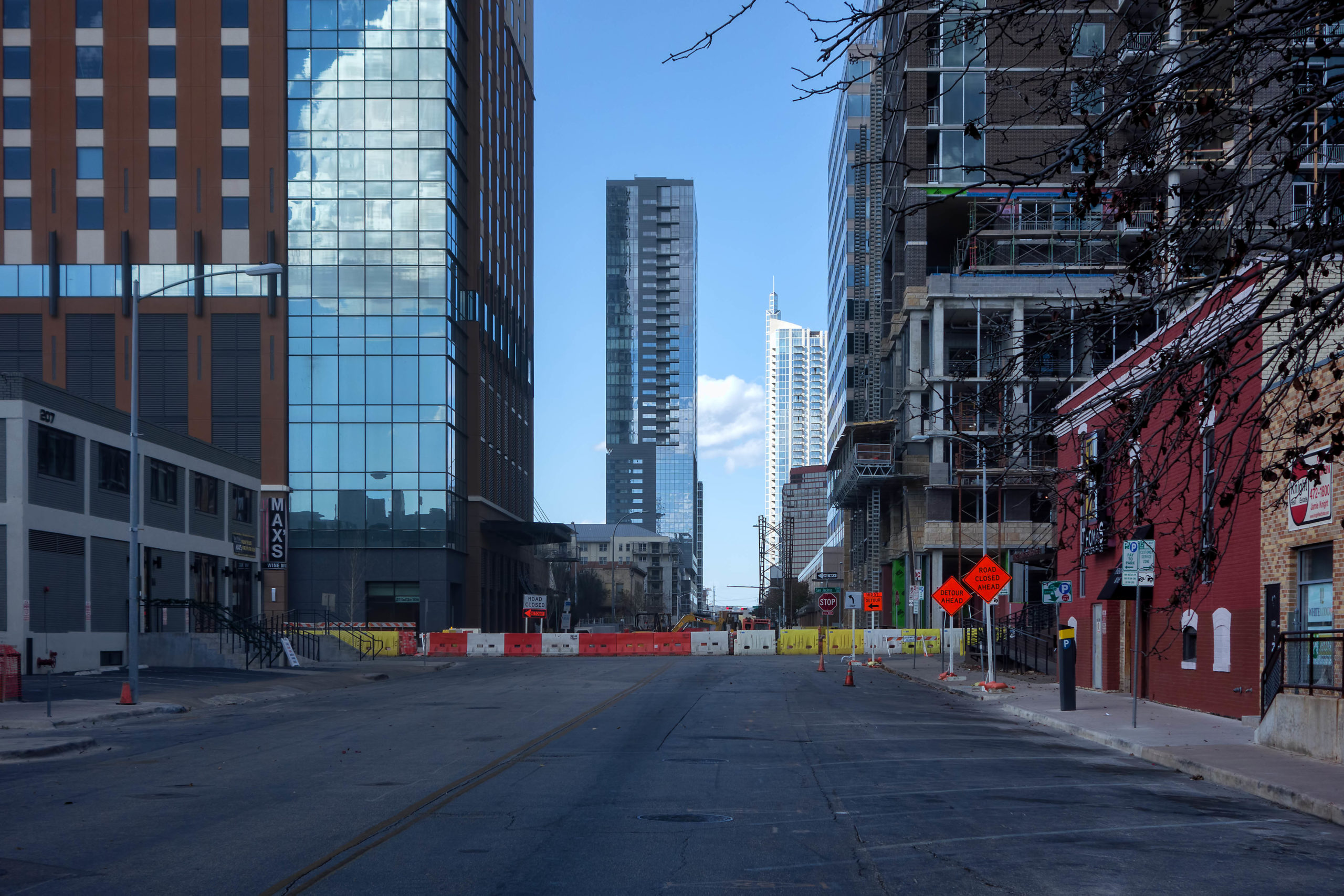
City Council passed the first of three readings for a street impact fee program on Thursday, marking a milestone in the multi-year effort to guarantee that developers help carry the cost of adding new transportation infrastructure. Council approved the first reading in a unanimous vote, but Council members raised several issues for the city to address before moving forward with second and third readings.
State limitations require transportation impact fees be used for roadway capacity projects, which may include facilities for active mobility or transit-related enhancements if stated in the city’s Roadway Capacity Plan. Austin Transportation Director Rob Spillar said the fees could essentially help pay for things like sidewalks or shared-use paths if they are part of a larger-capacity expansion project as defined by the state, but not outside of that context.
“I’m hearing sidewalks will be included in the complete streets considerations, but sidewalks for car-centric roads,” Council Member Natasha Harper-Madison said. “So when we’re talking about transit and transportation and including our access by way of modes, I’m hearing more roads for more cars in addition to the sidewalk.”
Council Member Paige Ellis asked for more information on how the state regulations would play out in downtown – where development is paired with severe restraints on added roadway capacity – before the program returns for second and third readings, potentially in December or January.
The city predicts the program will generate nearly $260 million for transportation projects in its first 10 years. Although that money will be limited to capacity expansions, Spillar said the added revenue will free up transportation bond dollars that would have been used for building new roadways and allow them to be spent in other ways.
A street impact fee is just one of the fees developers are required to pay the city to build a new structure. Given the city’s housing shortage, Council members Harper-Madison and Greg Casar said the program should be studied within the entire collection of development fees before final adoption, with the goal of ensuring the fees don’t discourage much-needed residential development.
“Austin’s development fees on average are three to four times higher than other similarly sized cities,” Harper-Madison said. “I would like to direct the relevant city staff … to evaluate all of the existing fees that are levied on development projects and identify that these could either be eliminated or reduced to offset the increases for street impact fees.”
Council Member Jimmy Flannigan agreed with the need for further analysis on fee amounts, noting that “if a fee upfront inhibits the development, it also inhibits the long-term perpetual tax that we might collect from that development.” He added, “We might be kind of robbing Peter to pay Paul if the fee is too high.”
In October, the city presented its revised impact fee system that standardizes fees for residential and non-residential development. The proposed fees would charge residential projects $850 per added vehicle mile and $1,250 per added vehicle mile for non-residential projects.
Kimberly Levinson, vice president of the Downtown Austin Neighborhood Association, said the program will be an important transportation tool for the city. Based on the way the fees are calculated, Levinson said it will ultimately “encourage developers to build less parking and build nearer to transit lines.”
As Council discusses the program in the weeks ahead, Council Member Ann Kitchen said it’s important to recognize that new development comes with street infrastructure costs that someone has to pay for, whether a developer or the community.
Mayor Pro Tem Delia Garza – soon to leave Council to take office as Travis County attorney – sided in favor of the proposed developer fees, despite the need to encourage new housing development.
“We have so many crises going on right now, including a housing crisis,” Garza said. “And if we want to be big enough to reimagine public safety, I would just ask our developers to reimagine their matrices and their capital stack.”
Despite many reservations, Council approved the first reading 10-0, with Mayor Steve Adler off the dais. The fees would take effect one year after Council’s final vote, possibly in December 2021 or January 2022, depending on Council’s upcoming actions.
Photo made available through a Creative Commons license.
The Austin Monitor’s work is made possible by donations from the community. Though our reporting covers donors from time to time, we are careful to keep business and editorial efforts separate while maintaining transparency. A complete list of donors is available here, and our code of ethics is explained here.
"sold" - Google News
November 13, 2020 at 01:08PM
https://ift.tt/35pU7oB
Council not yet sold on street impact fee plan - Austin Monitor
"sold" - Google News
https://ift.tt/3d9iyrC
https://ift.tt/3b37xGF
Bagikan Berita Ini














0 Response to "Council not yet sold on street impact fee plan - Austin Monitor"
Post a Comment